プーシキン『青銅の騎士』あらすじと感想~ゴーゴリ・ドストエフスキーの「ペテルブルグもの」の元祖
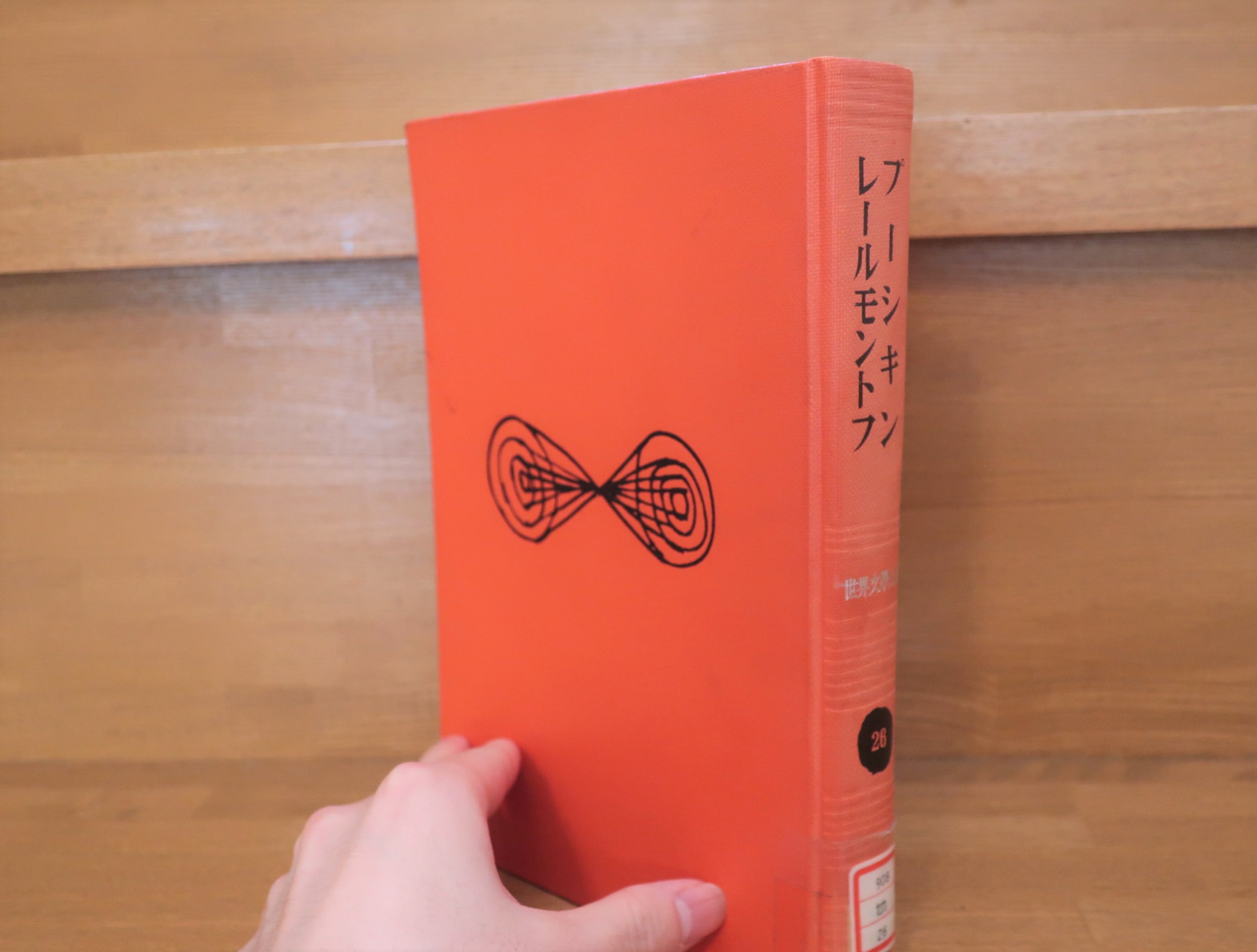
プーシキン『青銅の騎士』のあらすじと解説
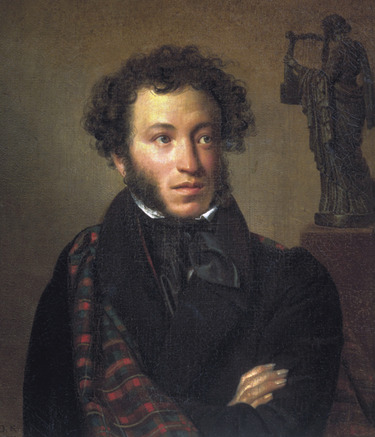
アレクサンドル・プーシキン(1799-1837)Wikipediaより
『青銅の騎士』は1833年にプーシキンによって書かれた作品で、同時期に書かれた『スペードの女王』と並んでプーシキン晩年の傑作として知られています。
私が読んだのは筑摩書房、『世界文学大系26 プーシキン レールモントフ』所収、谷耕平訳の『青銅の騎士』です。
早速ですがあらすじを見ていきましょう。
彼(エヴゲーニイ※ブログ筆者注)は恋人との、幸福な結婚生活を夢見ているが、一八二四年のペテルブルクの洪水で彼の夢はうちやぶられてしまう。恋人はこの洪水のために死んで、彼自身は悲しみのあまり次第に理性をうしなってゆく。彼は多くの人命をうばった洪水が自然の気まぐれのみによるものではなく、ネヴァ河口の低地に町を建てたピョートル一世の責任であると考える。彼はピョートルの事業がつねに人民の不幸の原因であったとして、ピョートルの銅像―青銅の騎士にむかって呪いのことばを投げる。青銅の騎士は急に動き出し、怒りにもえて、エヴゲーニイを追う。こうしてピョートルにたいする抗議は不幸なエヴゲーニイの死をもっておわる。
筑摩書房、『世界文学大系26 プーシキン レールモントフ』P416-417
以前謎の国ロシアの歴史を年表を用いてざっくり解説!の記事でも紹介しましたが、ペテルブルクは1703年からピョートル大帝に命令によって作られた街でした。
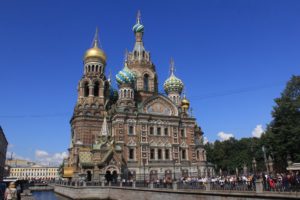
この記事でも述べましたように、ネヴァ河口はじめじめした極寒の湿地で、毎年のように洪水被害に襲われる最悪の土地でした。誰しもがここに街を作るなど狂気の沙汰だと大帝を諫めますが、彼は全く聞く耳を持ちません。
ピョートル大帝は全精力を結集し、9年をかけてサンクトペテルブルクの街を作り上げます。ですがこの最悪の土地の環境は過酷で、この街を作るために大量の農奴が動員され10万人以上の死者が出たと言われています。
これが『青銅の騎士』の物語の舞台背景となります。
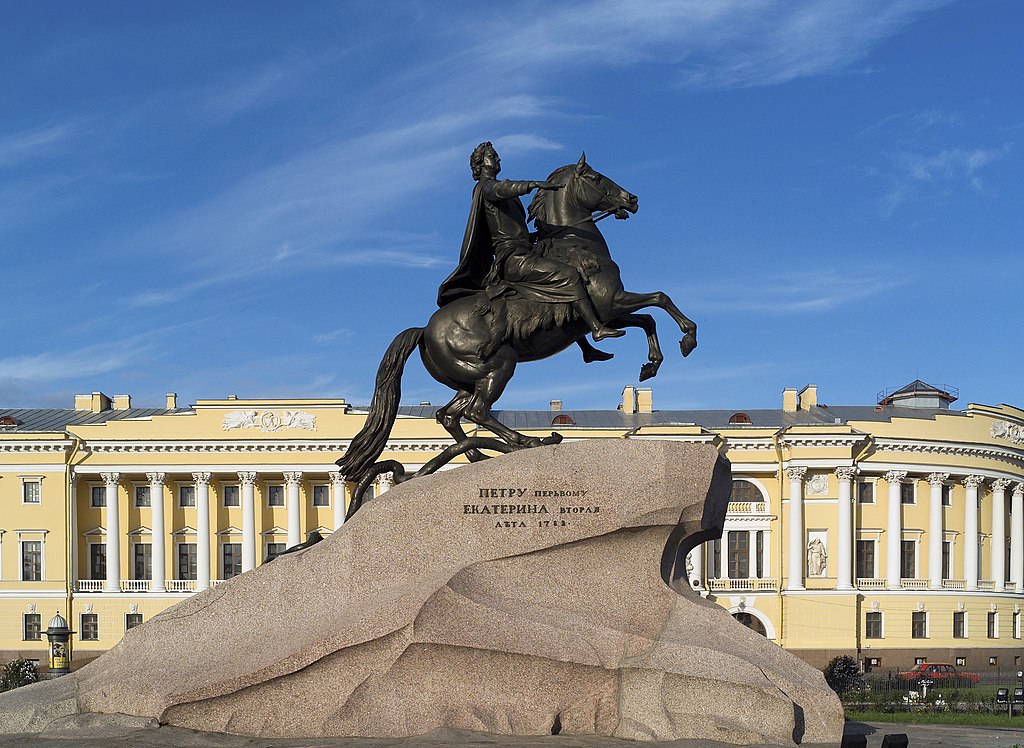
そしてこちらがまさしく題にもなっている「青銅の騎士像」です。
「青銅の騎士像」のモデルになったピョートル大帝についても以前当ブログで取り上げましたので興味のある方はぜひご覧ください。
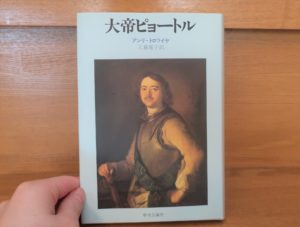
さて、この「青銅の騎士像」はピョートル帝の治世からおよそ50年後にロシアを治めていたエカテリーナ2世(治世1762-1796)という女帝が作らせた銅像で、1782年に除幕されました。
エカテリーナ2世はピョートル帝の最も正統な後継者を自認し、ピョートル帝の跡を継いでロシアの西洋化に邁進しました。そしてその象徴としてピョートル帝の像、すなわち「青銅の騎士像」が作られたのです。
ピョートル帝の化身「青銅の騎士」と主人公エヴゲーニイの幻想的な物語がこの作品の主題となっています。
アンリ・トロワイヤ『プーシキン伝』による解説
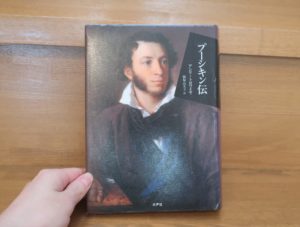
今回もアンリ・トロワイヤの『プーシキン伝』がこの作品について非常にわかりやすい解説をしていますのでこちらに引用していきたいと思います。
『青銅の騎士』は、円熟の詩である。これはプーシキンの作品の中で、最も完璧で、完成されているが、同時に最も深遠で謎めいた作品でもある。
この作品においては、歴史の路線と小説の路線、写実の路線と幻想の路線が、互いに出会い、同じ交点で一つに合わさっている。この詩の三人の主人公のうち、一人だけが生きた人間の小役人、エヴゲーニイだ。
第二の登場人物は、ピョートル大帝の銅像である。
第三の登場人物は、両岸を越えて氾濫し、町々を水没させるネヴァ川だ。肉体、青銅、流水。執筆の表向きの理由は、ぺテルブルクを襲った一八二四年十一月七日の洪水である。内実の理由は、青銅の騎士に象徴された皇帝の権威を前にした、個人の反抗である。
アンリ・トロワイヤ『プーシキン伝』篠塚比名子訳 水声社 P561
※一部改行しました
この詩では、まれに見る形式の完璧さによって、肉体を備えた主人公と青銅の主人公とが、対等の地位を占めている。
哀れな小役人のエヴゲーニイが、青銅の像と出会う。一国民の歴史が、一個人の歴史と遭遇する。この上なく卑小なものが、この上なく偉大なものと出会う。
この、この上なく卑小なものの悲嘆は、わたしたちにはよくわかる。洪水の災害は、彼の弱々しい黒い姿に具現されている。彼はある他人の決定によって、すべてを失った。
だから、この他人の像を見るとき、彼はその像に釈明を求めるのである。不幸が、エヴゲーニイに権利を与える。不幸が、束の間、彼をピョートル大帝にふさわしくする。エヴゲーニイは、ピョートル大帝に率直に物を言う。
アンリ・トロワイヤ『プーシキン伝』篠塚比名子訳 水声社 P564
※一部改行しました
エヴゲーニイは一人の人間だ。そしてピョートル大帝も一人の人間だった。どうして、万人の幸福もしくは不幸を、たった一人の意志が支配せねばならないのか?どうしてエヴゲーニイが、この専制君主が犯した過ちのために害を蒙らねばならないのか?
誰かが彼の人生、彼の愛を、彼が知らぬ間に好き勝手に扱ったのだ。誰かが彼に、この悲嘆、この狂気を余儀なくさせたのだ。誰かが彼から、彼自身を奪ったのだ。傲慢から。「ヨーロッパに臨む窓を開け」、海に臨んだ都市を建設し、嵐を、建築術の決まりを、神の意図を、軽んじる喜びのために。
それなのに、エヴゲーニイは服従しなければならない。彼の反抗すら、君主の怒りによって直ちに罰される。君主の跨がる馬の駆ける蹄の響きが、街を横切って彼を追いかける。
地上には正義はないということだ。歴史的必然性、すべてのものに勝るということだ。一国民の名声は、エヴゲーニイのような百万人もの男、パラーシャのような百万人もの女を押しつぶすことを前提にしているということだ。
ピョートル大帝は、エヴゲーニイの侮辱的な言葉にもかかわらず、パラーシャの死にもかかわらず、偉大であり続けるだろう。そのうえピョートル大帝は、エヴゲーニイもパラーシャも、二人のささやかな恋も無視する。街から街へと青銅の馬に跨がって彼が追いかけるのは、エヴゲーニイではない。それは、エヴゲーニイの種族、憤激した蟻ども、苛立ち興奮している人間たち、現在と未来の反抗者たち全部なのだ。
彼は彼らを、へとへとに疲れきるまで、ついには発狂するまで、追い詰めるだろう。彼は彼らに、この元老院広場で打ち勝つだろう。自分の銅像の周りに方陣を作っていたデカブリストたちに打ち勝ったように、波が自分の頑丈な像にぶつかって砕けたために大洪水に打ち勝ったように。人々の反抗も、大自然の反抗も、彼に打撃を与えることはできない。
そして、エヴゲーニイが自分たちの可能性を残酷にも奪われた百万人もの人間の化身であるのと同様に、ピョートル大帝の像は過去および来るべきすべてのツァーリ、すべての王、すべての専制君主、この世のあらゆる統治者の化身なのである。
アンリ・トロワイヤ『プーシキン伝』篠塚比名子訳 水声社 P564-565
※一部改行しました
民衆には指導者が必要だ。だが、この指導者が、任命されるや否や民衆の一員であることをやめ、自分の仲間たちの個人的な運命に敏感な一市民であることをやめるのである。彼にはもう、群集しか見えず、もう、地方単位でしか数えられない。彼の視線は地べたから離れ、計り知れぬ高さにまで遠ざかる。下の方の顔々は、彼にとってはもう、無名の、従順な、薔薇色の人波でしかない。
彼はそこを、自分が全体の幸福だと思うことを実現するために、でも、多くの場合自分自身の名声のために、刈りこむのである。
彼はたくさんの個人的に意味のあること、希望や愛や才能や御馳走や献身的行為や固有名詞や名前や手紙やしおれた花やほほえみを、ないがしろにする。彼は打倒し、かき回し、追い散らし、また集め、撫でてやり、熱狂させ、冷たくあしらい、そしてその一切をまた繰り返す。
彼は偉人である。もう人間ではない。だからエヴゲーニイも、彼を敵に回して、正しいのである。ピョートル大帝のような君主たちが自分たちの青銅の馬の背に跨がったままでいる限り、公正さはまったくないだろう。しかしながら、世界が存続するためには、常にピョートル大帝のような君主たちが必要だったし、これからも相変わらず必要だろう。そして、この世の最後の時に至るまで、青ざめた顔をし、髪を振り乱した哀れな狂人たちは、青銅の偶像たちに拳を振り上げて見せることだろう。
アンリ・トロワイヤ『プーシキン伝』篠塚比名子訳 水声社 P565-566
この解説を読んでいて私はふとナポレオンのことを思い出しました。
以前紹介した「やはり『罪と罰』は面白い…!ナポレオンという切り口からその魅力を考える」の記事でも考えていきましたが、ナポレオンも圧倒的な支配者で、「天才ナポレオンは何をしても許される」とドストエフスキーが想像してしまうほどの力を有していました。
ドストエフスキーはバルザック等のフランス文学からそうした着想を得ていたとずっと思っていましたが、プーシキンの『青銅の騎士』でも、同じように圧倒的な力を持つ支配者と弱者たる一個人の問題が描かれていたのです。
フランス文学だけではなくすでにプーシキンによってこの問題が提唱されていたからこそ、ドストエフスキーの中でより深くこの問題が熟成されていったのではないのでしょうか。
『青銅の騎士』と「ペテルブルクもの」
『青銅の騎士』はロシア人に対して「幻想的な街ペテルブルク」というイメージを確固たるものにしました。
川端香男里氏の『ロシア文学史』では次のように解説されています。
「大都市」のテーマは単に文学界だけではなく思想界の重要テーマでもあった。(中略)
べリンスキイは「ペテルブルグについては、沼の上どころかほとんど空中に建てられた都市のように考えるのがならいだった」と書いている。
事実、歴史的な聖物とか民族的伝説を欠き、母なるロシアと何のつながりも持たず、強権によって人民の犠牲において人為的に作られたこのぺテルブルグにロシアの民衆は不信を抱き続け、いつかは消え去ってもとの沼地にもどると信じていた。
西欧派べリンスキイはそのような考えは古びて意味がないとこのエッセイの中で論じるのであるが、「消え去るペテルブルグ」Петербург Исчезающийという民衆的神話はプーシキンによってすでに取り上げられ、ロシア文学の重要な主題となっていたのである。
叙事詩『青銅の騎士』、物語『スペードの女王』に始まる、ぺテルブルグを幻想的な現実的基盤の稀薄な都市として描くきわめてロシア的な文学伝統(いわゆるペテルブルグの神話)はゴーゴリ、そしてドストエフスキイに引き継がれることになる。
岩波書店 川端香男里『ロシア文学史』P192
※一部改行しました
プーシキンの『青銅の騎士』、『スペードの女王』は幻想的な街「ペテルブルク」のイメージを確固たるものとしました。
これによりゴーゴリの『ネフスキイ通り』や『外套』『鼻』やドストエフスキーの『貧しき人びと』が後に生まれてくることになるのです。
『青銅の騎士』が後のロシア人作家に与えた影響は並々ならぬものがあります。
こうした文学的な影響力もさることながら、ひとつの読み物としてもとても面白い作品です。さすがプーシキンの傑作と呼ばれるだけあります。
プーシキンらしく簡潔かつ研ぎ澄まされた表現でどんどん物語が動いていきます。現実と幻想が絶妙に入り混じったプーシキンの世界観がいかんなく発揮されています。これは面白いです。
以上、「プーシキン『青銅の騎士』あらすじ解説―ゴーゴリ・ドストエフスキーの「ペテルブルグもの」の元祖」でした。
Amazon商品ページはこちら↓
世界文学大系〈第26〉プーシキン,レールモントフ (1962年)
次の記事はこちら
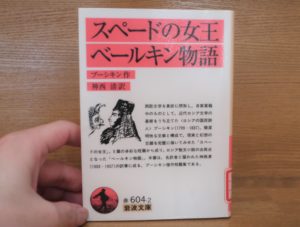
前の記事はこちら

関連記事
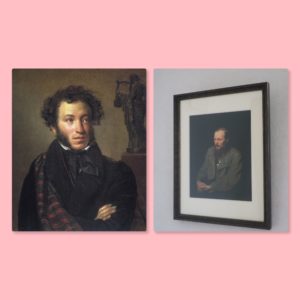
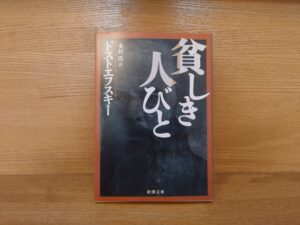
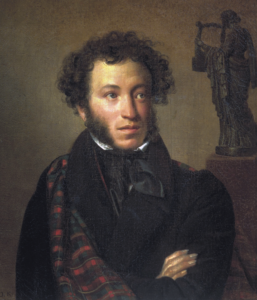

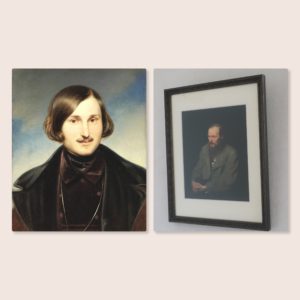





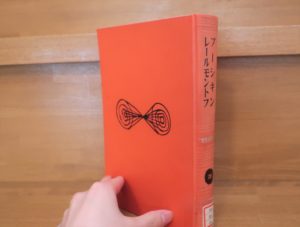
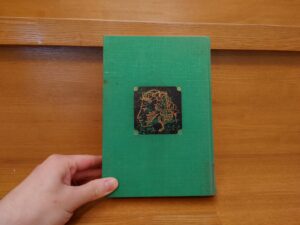
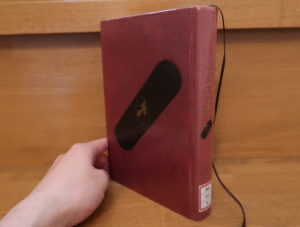

コメント